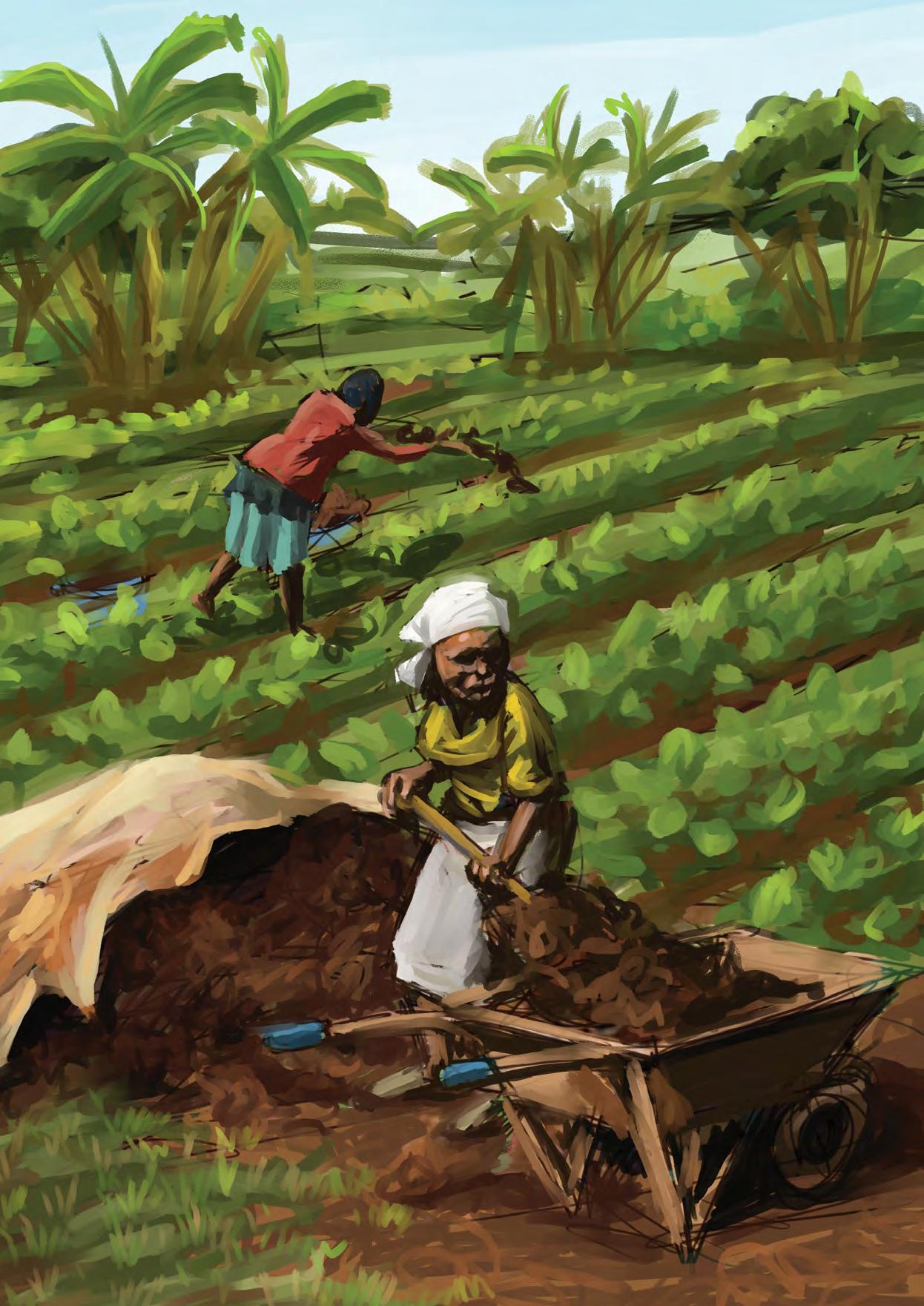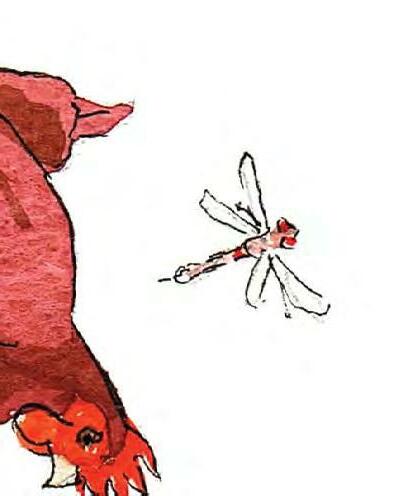
40 minute read
What is the “Chemical Mistake” and what is the solution?
2 What is the “Chemical Mistake”
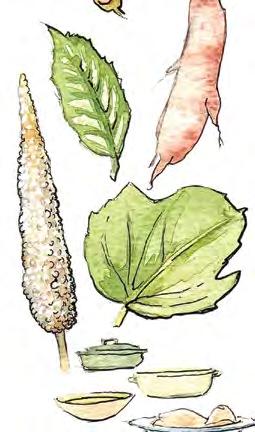
Advertisement
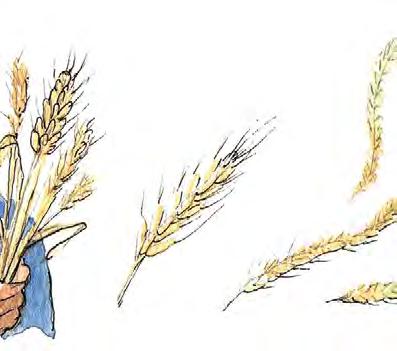
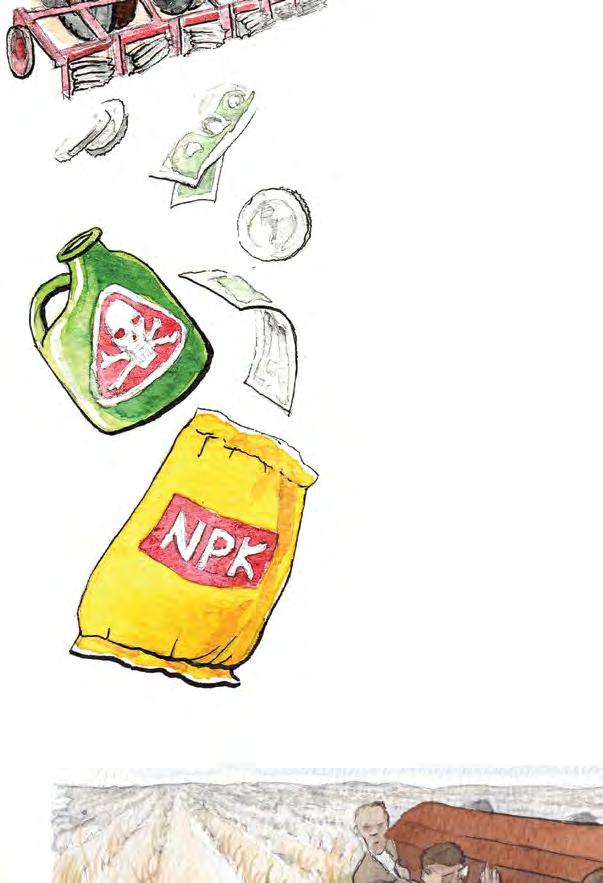
and what is the solution?

“Sending it now. See you there.”
“Kamali! It’s Abdou here. I am very excited to be working with you in our exploring the real experiences and issues around food in Africa and where better to start than here in Uganda! I just got back from interviewing James Aringo. Remember the one from PAG in Kampala. He gave me a powerful story about the effects of pesticides on food and health in his home village. We should get together to discuss this.”

“I’m impressed, Abdou, you are off to a flying start! Can you email it to me then we can meet tomorrow afternoon in the cafeteria? Same time?”
Are we producing food or poison?
by James Aringo
Growing up in the rural peasant family in Teso, Uganda in the early 90s, I would follow and watch my parents carry out farming activities using locally available resources. Now and then we would carry ekuron (wood ash) which was applied to the crops, along with mixtures of boiled herbs, chicken droppings, dung and crop residues. They would rotate and change crops and use traps to catch rodents. I don’t remember them bringing anything from the outside to put on the plants and looking back I am proud that we were self-sufficient.
We grew all our fruits and vegetables and hardly had to wash them before we ate them. What was left we sold for cash.
Change arrives in a bright red container
But then change arrived at our doorstep. One day, my father returned home with a container with a bright red colour and pictures of delicious fruits. Perhaps it was some kind of fruit juice to drink!
As I reached out to touch it my father snapped, “No, no, no! Don’t you ever touch that! Son, this is medicine used for killing pests and diseases in our garden. It is not good for you to play with, eat or drink because it is poisonous and deadly, eyari ijo!”
I got quite a fright. Of course, as a boy father knows best so I accepted what he said. He sprayed the crops and showed us how within a few hours the garden was completely free of the pests.
We were amazed. This would become the norm across our community, except for a few people who still used the old ways but now they were considered backward and non-progressive. Those who were using chemicals were so excited and we felt that we had finally got the solution we needed.
Soon almost all members of the community got involved and the agrochemical kind of farming gained popularity and praise among many farmers, both big and small. Later I discovered that this was the time the government was promoting the Green Revolution with modern inputs, like pesticides and fertilisers.
Growing up in a family that was heavily dependent on farming, we used to spend a lot of time in the field doing manual work like scaring birds, squirrels, weeding and mechanically picking insect pests. With the introduction of pesticides this was no longer necessary, or possible. Listening to my parents, I found myself dreaming that this was the way for us to prosper financially because now we could use minimal labour to produce more.
Are we feeding or poisoning ourselves slowly?
As I grew, I began to take more responsibility for farm work which included spraying pesticides from the same bright red canisters. But I started noticing that every time I used the pesticides, I would feel a certain nausea and headaches. My good friend Okello told me he had the same complaints. Asking around, we discovered that many members of the community were complaining of the same strange illnesses.
I remember asking myself “are we feeding or poisoning ourselves slowly?” That is when I started questioning the whole thing of using agricultural chemicals as I knew it.
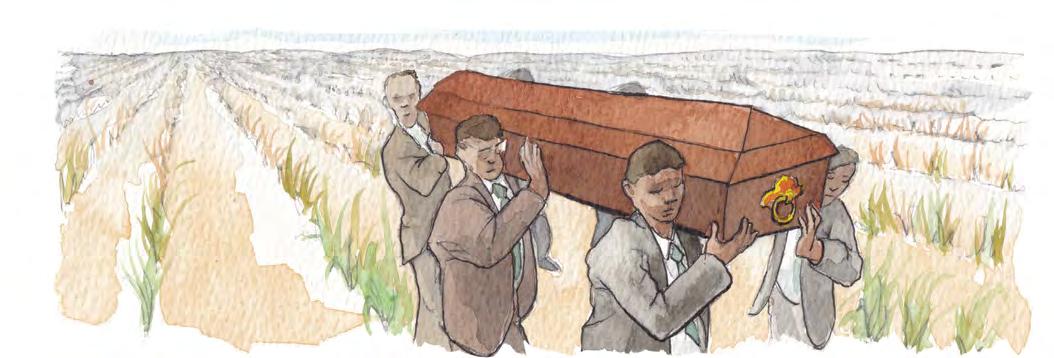
It was not long before people started noticing that their yields and soil fertility were declining. We saw fewer beneficial insects like bees and even birds.
One day I was listening to the local radio and in the news, it was reported that two people had died after consuming eboo (cowpea leaves) harvested from the neighbour’s garden. It would later be revealed that the owner of the garden had earlier in the sprayed his garden with a chemical in a bid to control pests.
A better way is revealed to me
As we were wondering what to do, I happened to be invited to Kampala to attend a workshop on agroecology and from this workshop I learnt a lot about food security from several keynote speakers.
The turning point was when I visited one of the exhibition stalls where they gave me different practical organic solutions to pest and disease problems. They were generous with their advice and provided me with lists of different materials to produce different concoctions.
I immediately started making organic mixtures to deal with pests and currently I am scaling the practice to 1.5 acres of land. I am now working with over 30 local farmers who are also giving testimonies of good yields, safe food and restoration of fertility to their fields that had declined.
I have realised that agroecology or natural farming are sustainable solution to the food crisis and environmental management. If we educate everyone to adopt agroecology, then surely those little change by many people will add up and transform our society. Your health heavily depends on what you eat; eat healthy food and live a healthy life.
DISCUSSION QUESTIONS
What struck you most in this story? Chemical pesticides do provide a quick and cheap solution to the problem but what else must we consider when choosing what methods to use to control pests? James says “If we educate everyone to adopt agroecology, then surely those little changes by many people will add up and transform our society.” Do you think that this is true or do we need to do more?”
Kamali speaks about the Chemical Mistake
“Abdou, James Aringo’s story really moved me. How did the government so easily convince people to put poison on their food? The sickness and the dying were heartbreaking. How could we be so gullible?”
“Too true, Kamali. The real shame is that we have lost confidence in our own knowledge and even in nature. If you think about it, nature has successfully maintained life, keeping a balance between insects and plants over thousands and thousands of years, WITHOUT the use of synthetic chemicals. Surely, this is the example we must follow.”
“It’s a global “Chemical Mistake” if you ask me. Abdou, look here I have done some digging around on the internet and discovered that pesticides started as a by-product of the Second World War. So, I put together this piece to submit as part of our findings. It also speaks to the question of whether individual change is sufficient. I hope the group finds it useful.”

What are pesticides, where do they come from and what is the problem with them?
by Kamali Ayele
Pesticides are chemicals used by people to kill certain living organisms in order to protect other living organisms.
There are four kinds of pesticides
Insecticides
These pesticides reduce destruction and contamination of growing and harvested crops by insects and their eggs.
Herbicides
These combat weeds, those which either kill or slow down the growth of other plants.
Rodenticides
These are important for controlling destruction and contamination of crops by vermin and rodent-borne diseases.
Fungicides
These are chemical compounds or biological organisms used to kill harmful parasitic fungi or their spores.
A SHORT HISTORY
Many inorganic chemicals have been used as pesticides since ancient times. Some chemicals, like copper, sulphur and mercury salts, have been used for centuries on a limited scale to control pests.
However, with the discovery and growth of synthetic chemicals, the large-scale use of pesticides accelerated in the 1930s. Driven by the need to control disease-transmitting insects in the tropics, hundreds of manufactured chemicals were screened for insecticidal properties. In the USA, the breakthrough came with dichlorodiphenyltrichloroethane (DDT), manufactured in Switzerland, followed by other chlorinated hydrocarbons. In Germany, a toxic group of compounds was developed, the organophosphates, whilst a third group of synthetic organic insecticides was also discovered in the 1940s, by Swiss workers.
However, it was war that became a major driver in the development of pesticides, notably chemical weapons, including mustard gas developed for use in World War 1, Zyklon B used in the gas chambers by the Nazis in World War 2 and “Agent Orange” which was used by the United States in Viet Nam to destroy vast jungles in which the Vietnamese guerrillas concealed themselves.
After the Second World War there was a rapid expansion of these chemicals into agriculture. DDT, (eventually banned in most countries), quickly became the most widely used pesticide in the world, used on the farms, in fields and in houses, combating insects and diseases (including malaria, typhus, and the bubonic plague).

THE SPREAD OF PESTICIDES
At the end of the two world wars, it was clear that hunger and food production were key drivers of conflict. Politicians from the industrialised nations felt that a way had to be found to satisfy the nutritional needs of the entire planet.
This prompted an explosion in studies and research aimed at developing pesticides that responded to every possible need of the agricultural industry. Their success was immediate. They were cheap, effective in small quantities, easy to apply, and widely toxic to pests.
Of course, those in power, who were also those with money, looked to largescale solutions which could make them large profits. They redirected their war chemicals towards agriculture and so arms factories began to produce massive quantities of pesticides.
WHAT IS THE PROBLEM WITH PESTICIDES AND HOW BIG IS IT?
In the last 50 years, while pesticides have appeared to be a miracle solution, it is now clear we are facing a global crisis of unsafe farming and unsafe food. The problem is that artificial, chemical pesticides are now used so much they are in the water, the air, the ground, our food. They’re so common that a recent study by Inserm noted that over 90% of the French population have two common pesticides, organophosphates and pyrethroids, in their bodies
In large-scale research between 2006 and 2018 in 141 countries by BMC Public Health, they estimate that 385 million cases of unintentional, acute pesticide poisoning (UAPP) occur every year world-wide amongst farming populations. This includes around 11,000 fatalities. With 860 million farmers on earth this means that about 44% of them are poisoned by pesticides every year. Most cases are in Southern Asia, followed by South-East Asia and East Africa.
So, the problem is that they are killing more than pests. They are also killing us in several ways by poisoning the environment we live in.
Pesticides are also killing off beneficial insects, like bees, on a massive scale. There is a real and leading to pest resistance, and the evolution of more harmful pests than ever. When the natural enemies of pests, their predators, are also killed by pesticides or die because there are less pests to eat, then any pests that survive or migrate from outside find themselves free to multiply and a population explosion of pests results, a paradoxical and vicious circle where more pesticides lead to more pests than ever.

HOW DO PESTICIDES CONTAMINATE FOOD AND WHAT EFFECTS DO THEY HAVE?
There is pesticide residue in food and water. Pesticides can run off fields or soak through the ground to enter watercourses. Spraying crops with pesticides, or using pesticides in the soil, can leave some residue on produce.
Pesticides are also potentially toxic to humans through the food we eat affecting reproduction, immune or nervous systems, causing respiratory problems, endocrine system disruption, neurological damage, Alzheimer’s and Parkinson’s, the build-up of heavy metals, and increased risk of certain cancers especially in women, and ADHD and autism spectrum disorder in children.
THE KILLING OF BEES AND OTHER BENEFICIAL INSECTS
A recent study suggests that as many as 40% of the world’s insect species are in decline. Insects form the base of many intricate food webs, their decline will upset the delicate balances of life, threatening ecological stability which all animals and plants depend on. So, many of these insects are vital for life on earth.
Bees – including honeybees, bumble bees and solitary bees – are important because they pollinate food crops. If all the bees went extinct, it would badly affect global food supplies. But honeybees are responsible for only one third of crop pollination and a small proportion of the wild plant pollination. Other insects including butterflies, bumblebees and small flies that do the rest of the work and these insects are in trouble too.
The top causes of declines in insect diversity and abundance.
Pesticides
Exposure to insecticides is a key cause of insect pollinator decline. Herbicides, mostly glyphosate, target a huge variety of the wild plants that bees need to forage. Glyphosate impacts the gut microbes of bees with devastating implications.
Climate change
Global warming is believed to be a major driver of wild bee declines. Some wild bees can only survive in a narrow range of temperatures. As their habitats get warmer, the places where they can live grow smaller.
Invasive species Habitat destruction
Invasive predators, parasites and disease-causing bacteria called “pathogens” have been blamed for the collapse of honeybee colonies around the world. In the past bees have coexisted with these pathogens but these diseases in recent times are thought to be linked to the bees’ increased exposure to pesticides, which damage their immune systems. Farming destroys the kinds of spaces that bees use to nest, it takes away the diversity of food that bees use to forage on.

AGROECOLOGY HAS A BETTER SOLUTION
Agroecology has approaches to dealing with pests which, unlike chemical pesticides, work with nature to deal with pests without harmful consequences to nature or to humans.
It starts with prevention. Proper weeding and land preparation, along with planting natural live barriers, can go a long way to preventing pests from taking hold. Using pest- and disease-resistant seeds also sets farmers at an advantage. Once crops are planted, adequate crop nutrition and good water management practices help plants stay healthy and thus better able to resist pest themselves. In some ways pests can also be seen as nature’s way of getting rid of weak plants.
When despite our best efforts, pests do take hold, the next step is biological control. A good example is the “push-pull” intercropping technology developed in Kenya. This system helps manages pests, while at the same time increases animal forage and enhances soil quality and fertility. The push-pull system manages pests through an attract-repel plant chemical strategy. Research shows that push-pull system has potential to prevent economic losses from stem borers and Striga weeds of about $7 billion annually, primarily affecting resource-poor and subsistence farmers while improving yields and cereal harvests sufficient to feed an estimated 27 million people.
Other biological techniques can range from simple sticky traps, methods to attract predator insects, to sophisticated microbial inoculants, which are referred to as “beneficial bacteria” that are developed from a crop’s natural enemies, such as bacteria, fungi and viruses.
However, it is difficult to obtain funding for such research because the outcomes are not chemicals that major corporations can sell for profit. But the results are often no cost or low cost biological practices that are accessible, after training, to the mass of small scale farmers. Awarenessraising and advocacy work is required to shift the thinking and patterns of agricultural research to “stop the chemical mistake”.
“That’s a very informative horror story, Kamali! But at least it ended with some hope in the agroecological approaches that are not only more effective and sustainable but also much cheaper. In the meantime, Monica put me in touch with Anne Maina who is actually doing something about the situation. I wrote to her, and she sent me this story.”

Killing us softly
by Anne Maina, National Coordinator of the Biodiversity and Biosafety Association of Kenya. www.bibakenya.org
Farmers have been left at the mercy of profitseeking multinationals who have the resources to promote these toxic agricultural inputs, making farmers dependent on them.
My grandmother Njeri sat on her three-legged stool in the kitchen preparing some hot tea, singing away as she always did. The taste of her rich milky tea washing down roasted sweet potatoes lingers even to this day. We had just arrived in Nyeri with my grandfather. He knew how much I loved spending my holidays in the village and had made it his mission to always pick me up from Nairobi every school holiday. I loved the lush environment cascading down the hills on the farm especially when it was wet and endless hours of joy playing with my cousin Njeri. How I wish my daughter would experience village life without the distractions of phones and TV.
We lost my grandmother in 1991 to throat cancer. I have often asked myself what would have caused the cancer? Grandmother like many in her generation ate well. I remember the yams, ripe and roasted bananas, cassava, the fermented millet and sorghum porridge and other delicacies that she cooked for us in various ways- boiled roasted and sometimes fried. While she told us beautiful stories on her three-stone wood fire.
The problem was that my grandparents had a coffee plantation, using toxic chemical fertilisers and pesticides. After independence Africans were finally allowed the grow commercial crops like coffee and tea. Extension workers regularly visited farmers to advise them on the chemical inputs to use, supplied by farmer cooperatives supplied fertilisers.
Like many others, my grandmother grew her local vegetables under the coffee trees. While spraying these toxic pesticides, my grandparents and unfortunately even farmers today did not always use the expensive safety protection kits like gloves, masks and gumboots. And the pesticides also found their way into the food they ate. Nor was this monitored by the government as it pushed and promoted the Green Revolution model that promotes the use of excessive chemical fertilisers and pesticides.

A study by the Kenya Medical Research Institute (KEMRI) in Kenya has shown a cancer belt in Nairobi and surrounding regions where there is large scale production of horticultural products like tomatoes and vegetables to feed the city. In Kenya, we use eight toxic ingredients that have been banned in the European Union (EU) because of links to endocrine disruption, mutagenesis and cancer.
As a granddaughter, I believe my grandmother caught throat cancer from the rampant used of malathion and other pesticides. Now, as a development practitioner, I have become involved in various campaigns against the use of toxic agricultural inputs by farmers. I have made it my mission to campaign against these poisons that are literally killing us.
My work has involved campaigning and advocacy work at the local level, sensitising farmers to stop the use of these toxic pesticides that are killing us slowly. I have also engaged political leaders and policy makers at the county and national level to put in place legislation to stop the use and importation of pesticides.
This is a mammoth battle, yet we have no choice but to fight it. Not only must we stop toxic pesticides, but we must pick up the torch and promote agroecology as the sure way to protect our environment and produce safe food for current and future generations.
DISCUSSION QUESTIONS
Why have multinationals and governments been so successful in promoting the use of pesticides? How does Anne answer James on the question of whether individual changes are enough?
“Well, that is another powerful story. We are certainly finding out important things to share with the others, Abdou!”
“Yes indeed, my sister. I wish I could meet Anne Maina and learn more about her work. I was impressed that she did not accept her grandmother’s death but went on to become a campaigner against the sale and use of toxic pesticides.”
“A woman with the courage of her convictions! Abdou, while you have been busy, so have I. I met with Joshua Enyetu, a Farmer Field School Master Trainer, here in Uganda. He told me his thought-provoking story.”
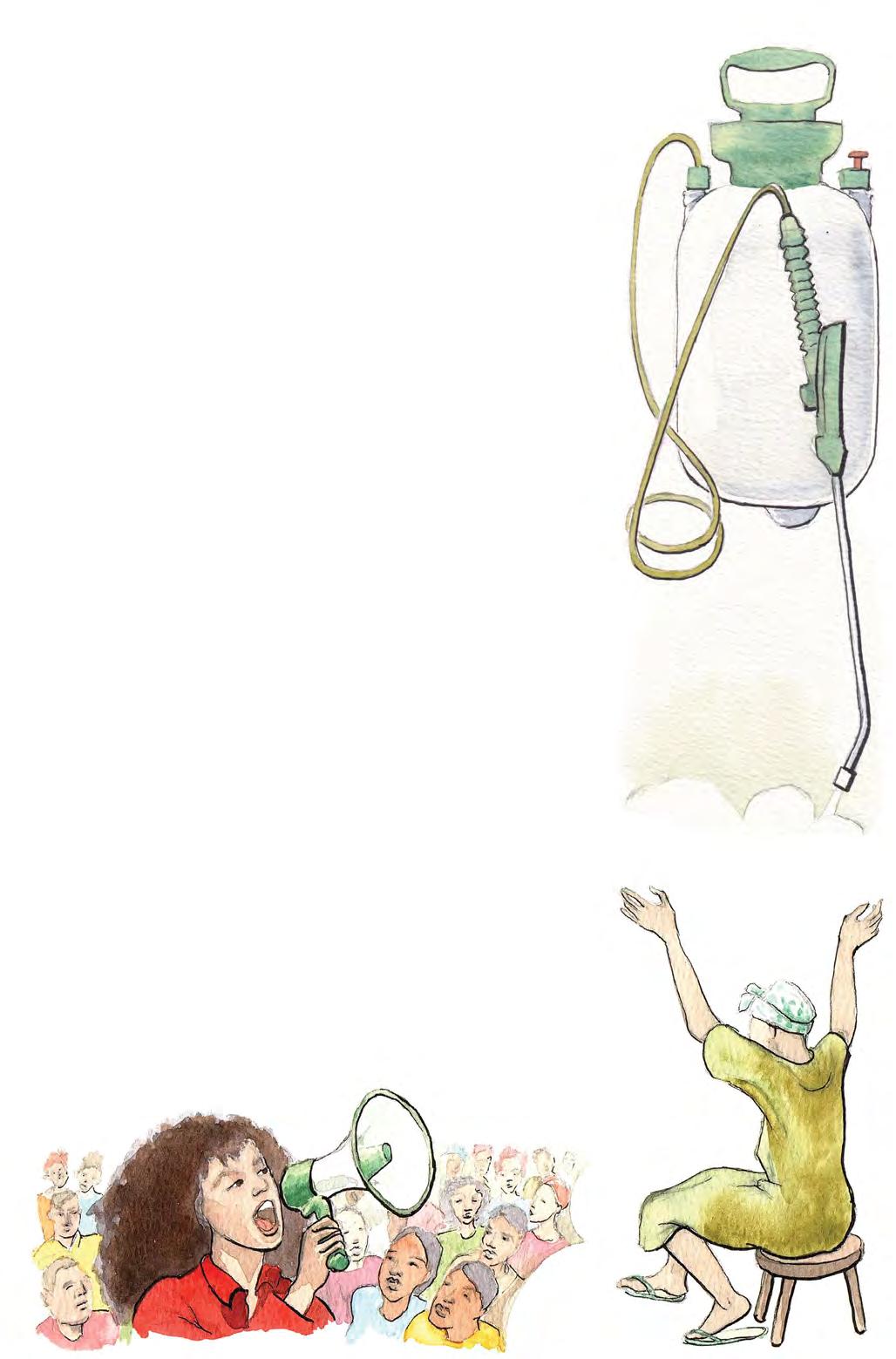

The good, the bad and the ugly...
I grew up in a farm from the1990s and from an early age, we helped plant seed, pull weeds, and pick harvest on our 10 acres of land growing cassava, maize and groundnuts. Seed was never a problem – not in our closely knit community. There was always surplus to save from the farm and if anyone lacked, neighbors or relatives would gladly share. And if our village was short of a variety, the next village wasn’t. This was our resilience.
But time flies. A child is an adult. And in my community, an adult is a farmer. Farmers know how many seeds go down and worry about how many come up. Their life depends on it. And so came changes as modern life and culture entered the community. When rain was delayed, bountiful harvests were reduced and seed surplus, decreased but now neighbours and relatives became less generous, and seed became more precious. Soon we had to acquire it by exchange, and before long we could only get seed from local markets. Then yields started dwindling, and we began to look for solutions beyond our locality.
Some travelled and brought back what they called “improved seed”. Their yields improved, but many resisted, and their yields continued to struggle. Outside influences grew. We would listen to the radio every evening to adverts saying, “improved seeds are the future” and experts gave their opinions “with our small plots you can still get as much harvest. Plot size doesn’t matter!” We needed to adapt or die!
Still, we resisted as did many. It takes more to change a farmer’s mind than a radio talkshow.
The low yields persisted and soon politicians got involved, and as we all know they like to be seen solving community problems. “Improved seeds are a sure path not just to survive, but to become wealthy.” The yields they projected promised us a surplus to eat, and enough to sell, to send our children and brothers to university, and enough to build permanent houses. They chastised us for clinging to old ways.
We relented and soon we were getting more from less. My three acres of land were yielding as much maize as 10 acres did a decade before! Their promises were true!
Seasons came. Seasons went. But there is something about farming cycles: they always seem to end and end they did. Only this time, it left us with diminishing yields. So, we listened to the radio and heard the same narrative about increased yields from improved seeds. What were we doing wrong? These seeds were not the magic wand we had at first hoped they would be. In fact, their increased productivity exhausted the land. It’s like they ate the soil, which meant that we would have to find a solution to that problem.
Another solution to another problem
But every quick and easy solution seems to cause another problem. The next solution came one Sunday afternoon when the village council Chairperson brought some guests from Kenya who had come with answers to our plight.
“You also need to improve your soil and for that we can sell you these wonderful chemical fertilisers. They are the latest thing!” They supplied it at a subsidised rate (we were told) for whoever bought their improved seed.
And so started another cycle. Our yields rebounded, magically and for most, it was as though the farms had been resurrected! And how we enjoyed the moment of plenty! Until one day, three years later, I took a routine spiritual walk by the family garden about 500 meters off our household. It had been several days and what caught my eyes was unlike anything I had ever noticed. Yellowish and stunted maize, and it was not one plant, but the whole lot in the 3 acres. A total loss.
Many farmers suffered the same, but none had answers. Was it the type of fertiliser? Or had it been applied wrongly? Maybe it had to do with seeds? We could not tell.
What, however, was not in doubt, was one fact: the impact on our agriculture and overall livelihood was massive. In the years to follow we would come depend more and more on costly fertilisers. Absent them, you could not dream of a meaningful harvest. Our community, once a grain granary for the region, became a starved consumer, dependent on food imports.
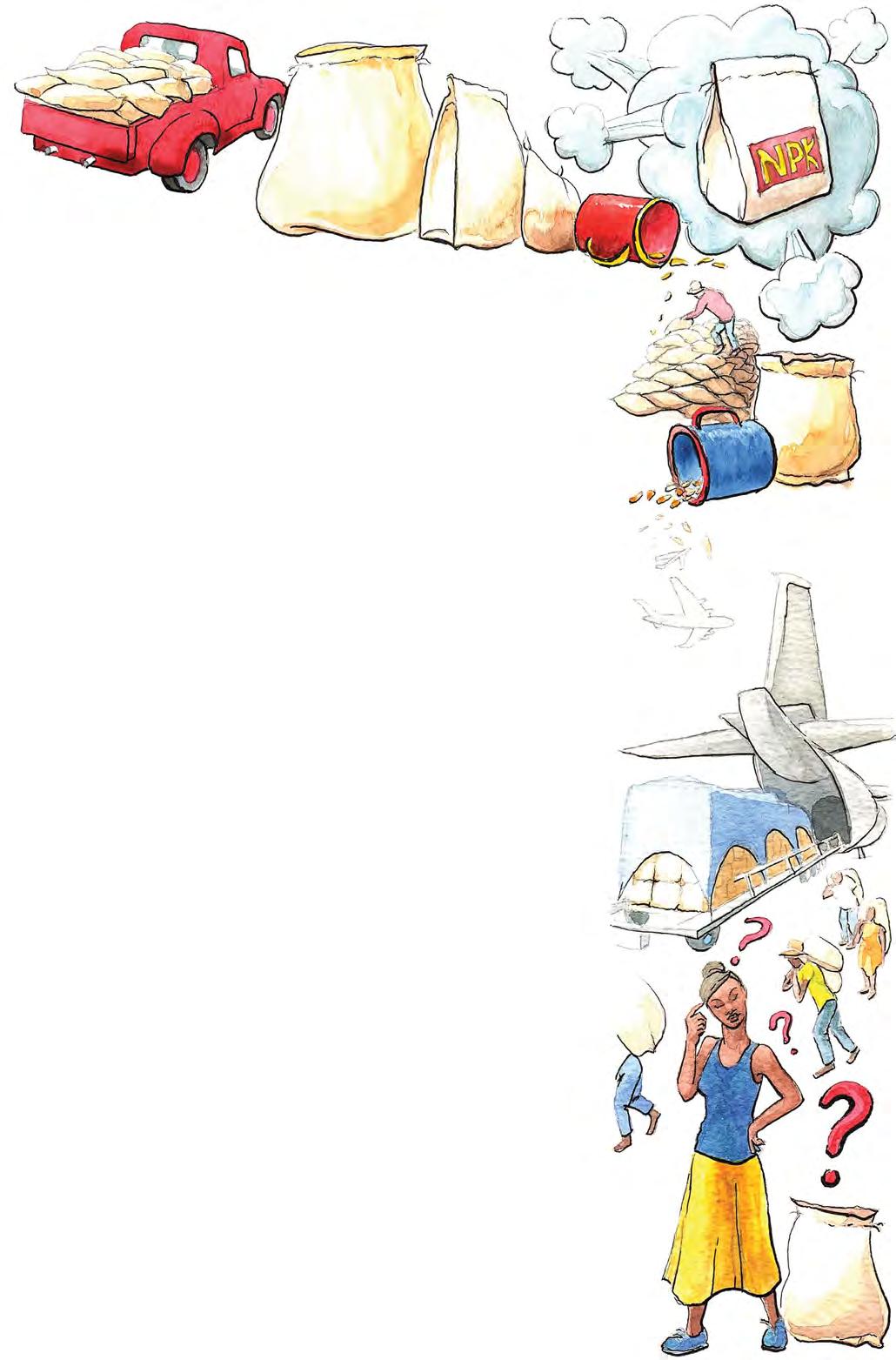
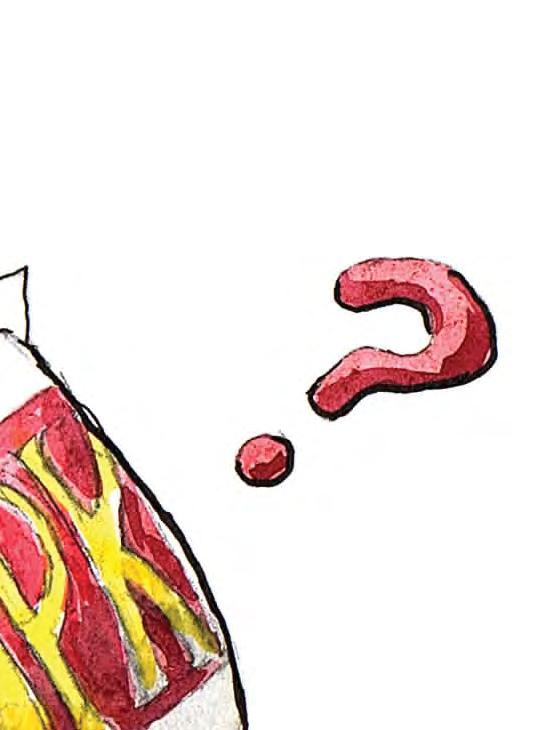
DISCUSSION QUESTIONS
What do you think is going on here? First the new seeds are successful and then they fail, then fertilisers provide a solution, but only for two years. What is the pattern and where does our changing relationship with nature come into this problem?
“Kamali, I don’t know what to make of this story. It is a sad one but help me out. What’s the main problem are we dealing with here?”
“I don’t think it is just one problem, Abdou. First of all, there was an existing problem of land pressure and declining yields and so to begin with the farmers were looking for a solution to that which came in the form of more productive seeds. But these seeds just exhausted the soils and so they looked for another solution which came in the form of chemical fertilisers. But these also exhausted the soil and created some dangerous dependencies. “Improved” seeds, pesticides and fertilisers. This is the problem. However, he does not say much about why fertilisers are a problem. Like with chemical pesticides, why don’t we work together on a piece on fertilisers, comparing organic and chemical approaches, something for the others to read.”
“Good thinking, Kamali. By the way Monica suggested that we get in touch with an agroecologist called John Wilson to get his experience in Zimbabwe on the use of pesticides, fertilisers and food quality. So, I am going to email him and see what he has to say, in the meantime.

Natural farming and organic fertilisers versus industrial farming and chemical fertilisers
By Kamali Ayele and Abdou Camara
Nature always keeps the soil covered, it doesn’t plough, has a diversity of plants growing and recycles everything effectively as it dies. These keep soil healthy. But agriculture disrupts all of these factors, leading to seriously degraded and often eroded soil. So, we need to replenish the soil with fertilisers.
There are exceptions. Food forests, biodiverse cropping areas and well-managed rangelands are different in that they are largely able to regenerate themselves, restoring their own soil life and productivity continuously.
Plants use photosynthesis to convert sunlight into sugars which they use both to grow and feed microbes (bacteria and fungi) through their roots. In return, microbes provide plants with nutrients from the soil. In addition, the roots and residues of plants that die feed life in the soil.
So, in the natural cycle not only do plants need healthy soils, but soils need healthy plants.
Conventional agriculture that ploughs up the soil badly disrupts this natural cycle, and the system breaks down. Nutrients in the soil are no longer as available to plants and the soil begins a downward spiral to increasing bad health.
In the past, farmers discovered various ways to deal with this: e.g. using fallowing, letting the soil “rest” for several years, allowing nature to regenerate the soil; by adding manure and compost with their nitrogen and other elements, including bacteria and fungi. Low or no tillage approaches are a key approach to preventing soil decline.
Some plants work with certain bacteria which take nitrogen from the air and make it available to plant roots. For example, the roots of legume crops, like peas, beans, cowpeas, chickpeas, bambara beans, groundnuts, pigeon peas and soybeans, host such bacteria that replenish nitrogen which is why they are included in crop rotation.

INDUSTRIAL FARMING AND CHEMICAL FERTILISERS
Nitrogen fertiliser is the most common fertiliser, manufactured using the In this way, long Haber-Bosch process, and is combined with potassium and phosphate, term use of chemical fertilisers disrupts ecosystems, and which are mined. These chemicals are in a soluble form and are taken up directly by the roots of plants. In the 1920s German chemist Fritz Haber devised a way to extract nitrogen from the air to form a granular chemical compound fertiliser, threatens biodiversity. using what became known as the Haber-Bosch process. Haber is also considered the “father of chemical warfare” for his years of work developing and weaponising chlorine and other poisonous gases during World War One.
This method was driven by the promise of a lucrative contract from the chemical company BASF. Carl Bosch, the company’s engineer, managed to replicate Haber’s process on an industrial scale, thus the Haber-Bosch process. Both men later won Nobel Prizes - controversially, in Haber’s case, as many by then considered him to be a war criminal.
In the Haber-Bosch process hydrogen binds with nitrogen to form ammonia. Energy is needed to generate extreme heat and pressure. The heat of a wood-fired pizza oven was needed combined with the pressure you would experience 2 km under the sea. To produce 160 million tonnes of ammonia a year - the majority of which is used for fertiliser - the Haber-Bosch process today consumes more than 1% of all the world’s energy. That is a lot of carbon emissions.
THE ENVIRONMENTAL DAMAGE OF CHEMICAL FERTILISERS
Only some of the nitrogen in chemical fertilisers makes its way via crops into human stomachs as an element of food molecules, perhaps as little as 15%. Most of it ends up in the air as nitrous oxide, which is a powerful greenhouse gas, and contributes to acid rain.
Another major part of the nitrogen gets into the water when rainwater washes it out of the soil. It is very soluble. In the water cycle, nitrogen pollutes streams and rivers, and also drinking water. Continuous application of nitrogen to the land causes chemical reactions which “burns” the organic matter in the soil which makes soils more acidic, and less able to hold water for plants.
In this way, long term use of chemical fertilisers disrupts ecosystems, and threatens biodiversity.
Phosphorus and other nutrients also pollute water, entering into streams and rivers which run into the ocean. The chemical pollution from fertilisers and other agrochemicals such as pesticides can create riverine and marine dead zones where all life has been extinguished. There are over 400 dead zones in the world’s oceans and seas, the largest of which is in the Gulf of Oman measuring 165 000 square-kilometres. These “dead zones” in lakes and the ocean have huge blooms of algae which release toxic compounds and absorb large quantities of oxygen at night, and in the day block sunlight into the water. When blue-green algae blooms die, its decomposition by bacteria also absorbs high levels of oxygen. This oxygen depletion kills the fish and other life below.
The Haber-Bosch process is not the only cause of these problems, but it is a major one, and it is not going away. Demand for fertiliser is projected to double in the coming century.
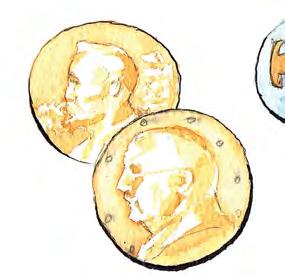
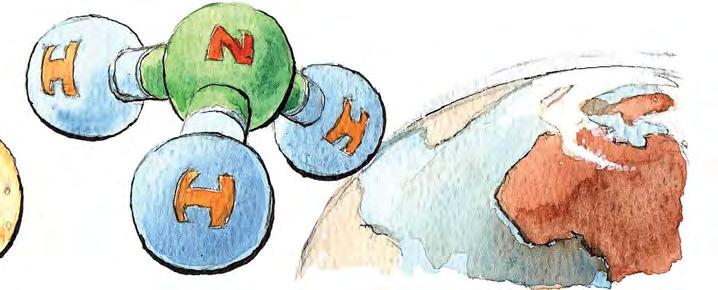
INDUSTRIAL VERSUS NATURAL FARMING FERTILISERS
Industrial farming and chemical fertilisers
• The food quality from plants grown with chemical fertilisers is often low in the vital micro-nutrients needed for human health. • Chemical fertilisers add no organic matter to your soil and contribute nothing to improving soil structure: In fact, research suggests that chemical fertilisers actually harm the microorganisms in the soil, reduces the level of organic matter, making the soil more acidic and less able to support long-term plant growth. • Initial improved yields from chemical fertilisers do not often last long and require more and more fertiliser, with the danger of soil becoming lifeless dirt.
This leads to the release of carbon dioxide, a major contributor to climate change. • Manufacturing chemical fertilisers requires large amounts of energy, usually supplied by non-renewable resources, increasing pollution and global warming.
Natural farming with organic fertilisers
• The food quality from plants grown using natural farming practices and organic or bio fertilisers is often high in the vital micro-nutrients needed for human health. • Natural farming practices, along with organic fertilisers, contribute organic matter to your soil, improving its structure, feeding soil microbes, fighting harmful fungal and bacterial diseases, and contributing micronutrients. • Natural farming practices and organic fertilisers foster biological processes in soil near the roots that supply a slow but steady and balanced diet of essential minerals for plants. • Some organic fertilisers, such as manure and compost, may be inexpensive — or free if you create them yourself.
In essence, industrial agriculture treats soil as a thing, a dead container for growing plants in, adding chemicals and water to feed them. Out of this you get food that is not very nutritious and destroys organic matter with harmful consequences to the climate. But natural farming treats the soil as a living substance, to be cared for and which in turn cares for plants, creating healthier food as a result.
“Abdou, what struck me is how many of our harmful technologies, like pesticides and fertilisers come from wartime investments. Nuclear bombs and nuclear power is another. What will come next?”
“Robot farmworkers which are already being used in the industrialised world. They won’t need farmers soon! By the way Kamali, John Wilson responded to my email. He sent me two pieces: firstly, the story or history of the Green Revolution and secondly, a story of a Green Revolution farmer in Zimbabwe and his wife who farms in the traditional way. Here, have a look.”
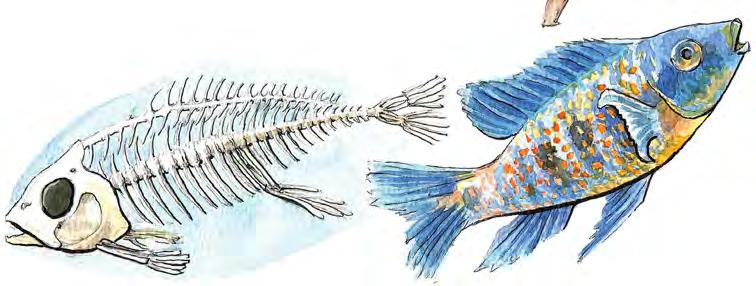
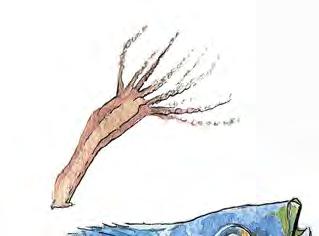
The story of the Green Revolution (aka the Chemical Revolution)
Dear Abdou Greetings from Harare and thanks for your letter asking about the Green Revolution. The Green Revolution is about how seed and farming have been taken over by industry and privatised. We often assume that the way things are today is normal, even natural, but the path of agriculture’s Green Revolution over the last 70 years has been completely abnormal and unnatural. From the mid-1800s until the second world war, countries like the USA and Europe increasingly introduced chemicals into farming practices. They seemed to have excellent results in the short term, but at great cost. During the Second World War many factories turned to the production of bombs and chemicals for war purposes. Then, after the war, these factories then turned to the chemical production of pesticides and fertilisers for agriculture. In addition, an American called Norman Borlaug worked with others in Mexico to breed higher yielding hybrid seeds for grains like maize, to be grown with the same chemical fertilisers and pesticides. After the war, countries like India were threatened by famine. Borlaug’s ‘Green Revolution’ approach, as it became known, came in to address this with monocropping, ploughing, hybrid seeds, and soluble chemical fertilisers and pesticides. The short-term success seemed spectacular. Borlaug received the Nobel prize in 1970. The Green Revolution spread all over the world as the answer to the threat of world hunger. But it should have been called the Chemical Revolution, not the Green Revolution. The UN set up research institutions around the world to drive the research for the spread of the Green Revolution approach and practices. These are known as the CGIAR research family, each concentrating on crops for different climates. The Green Revolution versus Natural Farming The Green Revolution Approach •
clear the fields and plough up the soil, • sow one crop (monocropping) of hybrid seeds • add specific amounts of chemical fertiliser and later apply top dressings of fertiliser • apply chemical pesticides for any pests or diseases. The Natural Farming (agroecology) Approach: • do minimum tillage so as not to damage the microbial life in the soil •
keep the soil covered at all times to protect the microbes and prevent evaporation • grow a diversity of crops, • use local seeds suited for particular areas,
• avoid chemical fertilisers and pesticides because they damage life in the soil and create dependency, • only use inputs such as compost or bio-stimulants that promote microbial life in the soil.

Abdou, the way I see it, we took a wrong turning, a chemical turning. We forgot about biology, about the importance of the life-giving microbes in the soil. It gave the opportunity for big industry to grow and make huge profits. The natural farming route doesn’t offer industry much opportunity for making savings and profits at all. These go to the farmer! From the second world war a huge chemical industry developed to serve agriculture. However, seed companies remained relatively small till the late 1970s. That changed from 1980 when a court in the US allowed for the patenting of life and then genetically modified seeds (GMOs) took off. The consultancy company of McKinsey and Co. saw an opportunity: by controlling the source of seed the corporates could control the entire food chain from seed through processing and the distribution phases. The big corporations went on a buying spree. They’ve bought out hundreds of companies. The situation today can be seen in this table from the organisation ETC who’ve been tracking this corporate concentration process for decades.
But the costs of this chemical revolution have become apparent. Mostly these have been in the form of great damage to the health of the soil and to the health of people. Other big costs are the dependency by farmers on the inputs. They and their soil become addicted to these inputs and the price has kept going up. Suicides amongst farmers in India due to debt have been high in some states. Another less obvious cost is that knowledge development for farming has been largely taken away from farmers. The experts in their hi-tech labs are the agronomists who advise farmers what to do. This causes more dependency. In the early 2000s the Gates Foundation set up something called a NEW Green Revolution for Africa (AGRA). The newness was supposedly learning from the mistakes. However, this hasn’t really happened, as it’s the same thing being promoted with some tweaks, a far-cry from natural farming.
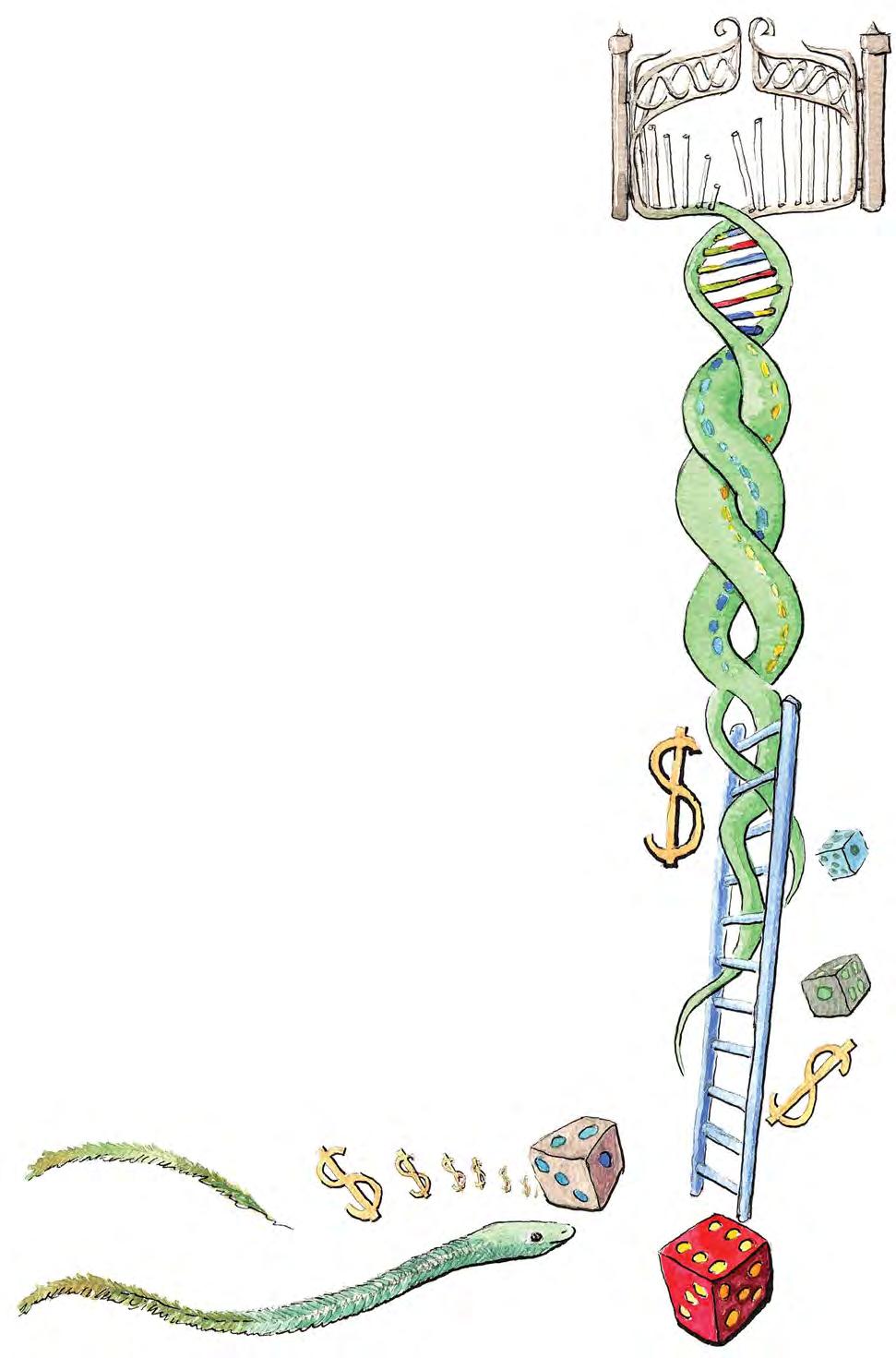
Seed Sales of the Leading Companies, 2018
Company (Headquarters) 1 Bayer Crop Science (includes
Monsanto) Seed sales US$ million
% Market share 9338 22.41%
2 Corteva Agriscience20 (pro forma) 8008 19.22% 3 ChemChina /Syngenta (pro forma) 3004 7.21% 4 Vilmorin & Cie /Limagrain21 (France) 1835 4.40%
Total Top 4 22185 53.24%
Total Worldwide Seed Sales 41670
Source: ETC Group, 2019, from company reporting
New research in the biological sciences have been revealing to us some of the wonders of nature in the soil, if we choose to work with nature and not against her. This, combined the experience of those farmers who already farm with nature, is giving us 21st century farming, Abdou. This is the cutting edge and the Green Chemical revolution was a big 20th century mistake. Unfortunately, there are many wealthy vested interests that don’t want to let go of this Chemical Revolution. Abdou, but I hope that gives you a quick overview of what the Green Revolution is.
Greetings to you and your fellow students John Wilson
“Abdou, we really take things for granted, thinking that the way things are is normal. But how can they ignore the dangers of pesticides and fertilisers and also the immense knowledge that African farmers have!”
“You are absolutely right, Kamali. I suppose the big issue is that there isn’t much money to be made by big corporations if farmers use their existing knowledge and approaches. Have a look at this second story from John which shows exactly that.”
Remembering the visit to Amai Moses all those years ago
by John Wilson A proud day for VaMurehwa
“I could see that VaMurehwa was feeling very proud in front of this large crowd. Why shouldn’t he be? He was doing just what was being asked of him and today, the 16 March 1989, he was going to be awarded his Master Farmer certificate by the agricultural extension officer.
As I looked at the impressive dark green field of maize, knowing how it had been grown, I felt some despair. Yet how could anyone think of it except in positive terms? The government had achieved wonders in spreading Green Revolution practices amongst smallholder farmers in Zimbabwe since Independence nine years earlier.
“To prepare my field,” continued Mr. Murehwa, “I ploughed my field soon after the last rains as my master farmer training taught me.”
This meant the field was left bare for at least five months! How could that be considered a good practice, I asked myself.

“With the first good rains,” he continued, “I planted my maize seed with the recommended amount of Compound D fertiliser. I bought all this with the loan I received from the Agricultural Finance Company (AFC).
“We used draft power twice to weed the field when it was still small and then did hand weeding once more later on. We applied a powder pesticide twice to control stalk borer when we noticed it was becoming too much…”
Nearly a decade into Zimbabwe’s independence it was now the smaller farmers who were feeding the nation and not commercial farmers, as it had been before independence. This Green Revolution technology that had previously only been available to white commercial farmers was now widely available all over the country. This spread had been a remarkable achievement by the government. But what exactly was the achievement? That was the question that bothered me.
Maize was now equated with food across the country. Smallholder farmers were now trapped in the clutches of chemical agriculture where you have to keep buying your inputs if you want to produce anything. The soil was degrading as research by the same Government was showing. Leaving soil bare over the whole dry season meant a vast drop in the soil organic matter. For whom is this achievement? Zimbabwe was considered the break basket of the region, but at what cost? Smallholder farmers were now trapped in the clutches of chemical agriculture where you have to keep buying your inputs if you want to produce anything.
A surprising lunch is served
After the ceremony, in which eight other farmers also received their Master Farmer certificates, the crowd started to disperse. Mr. Murehwa’s wife came to where I was standing and introduced herself as Amai Moses (mother of Moses) and asked me to follow her to lunch.
We walked about half a kilometre to the Murehwa homestead. Spread across a number of tables was a wide variety of dishes in bowls. I counted twelve before I was interrupted by a smiling woman offering me a jug to wash. “Please take a plate and help yourself,” she then said.
“The only food I saw in the field was maize,” I commented, “and yet here we have a great diversity of food. Did you buy this from a neighbour?” I asked. The women all laughed, and Amai Moses came up closer to me and said in a low conspiratorial voice, “Would you like to come back one day and see my field? These days the way I grow things is frowned upon and so I keep it to myself, but I’m happy to share with you.” After feasting on one of the most delicious meals I’d ever had, I arranged a day to come back and see Amai Moses’ field.
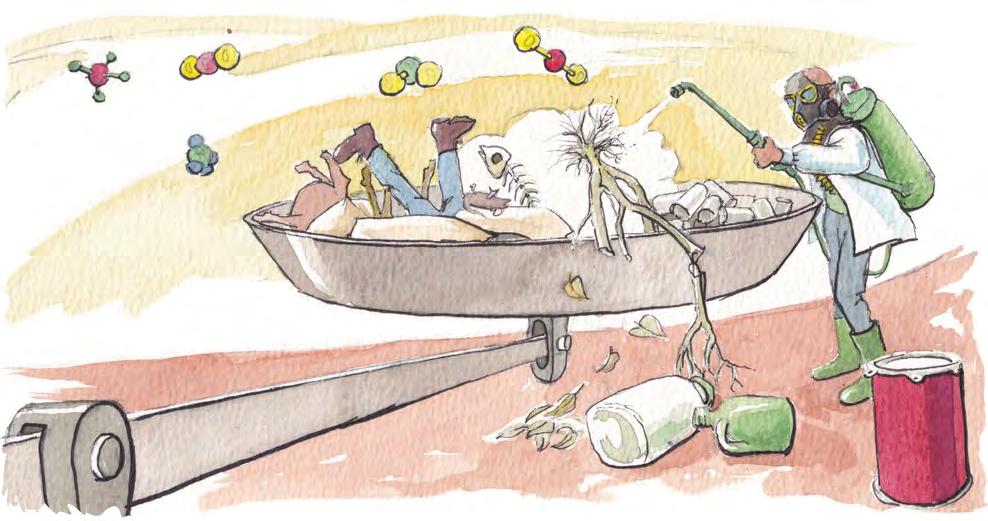
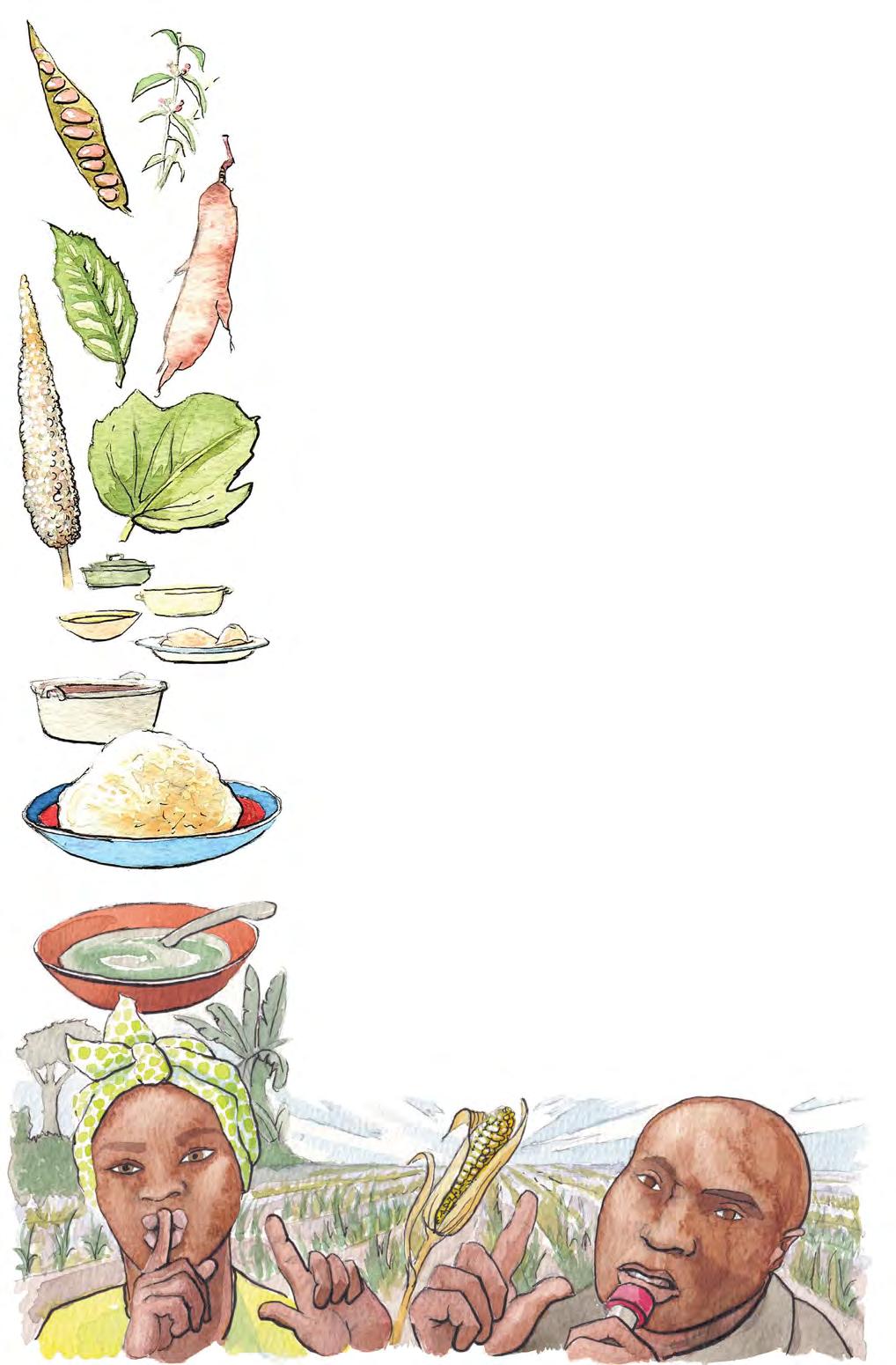
Two weeks later I returned to the Murehwa homestead. It was still cool, and Amai and Baba Moses were sitting under a tree near their kitchen drinking tea. They offered me tea too. “Tanganda or Zumbani?” asked Amai Moses. “Zumbani,” I said.
I could sense a slight tension in the air. Baba Moses spoke first, “I gather you’ve come to see my wife’s field today,” he stated. “What’s your interest?”. I cleared my throat a little nervously. “I want to learn about how she grows all those different foods that we ate two weeks ago.” Baba Moses looked at me with thoughtful eyes and a small smile. “Most people come here to see my maize field and my wife even keeps the dumeni (extension officer) away from her field as what she’s doing is considered a little backward.”
“But what she’s doing is based on hundreds of years of knowledge growing crops in this area,” I responded.
“Let’s go and see the field,” Amai Moses said jumping up, and marching off. Baba Moses didn’t join us.
We followed a narrow path to a field with many different crops with trees too, dotted around. I started to name what I could see to myself: finger millet, sorghum, pearl millet, mapudzi (gourds), pumpkins, watermelons, a patch of ground nuts and next to it a section of nyimo (Bambara nuts). There were also quite a few edible ‘weeds’ such as amaranth and spider plant (nyeve). This was a whole field of real food! I looked at Amai Moses and smiled, “Now I see where all our food came from. Can you take me around and tell me about all the plants you are growing here?”
For the next hour we walked around the field and she named all the different varieties of the crops she was growing and what they were good for. In that hour I listened to local farming knowledge like I’d never listened to before, and yet this way of farming was considered backward!
“Abdou, it makes me mad that the rich knowledge of traditional farming has been belittled and called backwards. It’s almost criminal and is leading to ill health and even early deaths across Africa! How are we going to reverse this stupidity and restore the value of those practices?”
“Let’s take this question back to the class, Kamali. And I am really looking forward to sharing all our findings with the class. They will find them eye-opening!”
NOTES
